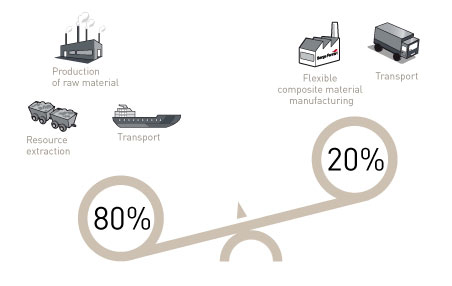Impact reduction

Impact: to reduce impacts effectively, we must understand them
Life Cycle Analysis (LCA) shows that most environmental impacts are caused by raw material extraction and production (80% on average).

LCA indicators:
Indicators are used to measure different impacts on the environment. They need to be measurable quantities to enable comparison and monitoring of improvements.
Energy
Consumption of renewable (wind power, etc.) and non-renewable (oil, gas, etc.) energy throughout the life cycle
Water
Water consumed over the whole life cycle
Natural resources
Consumption of non-renewable resources, weighted by their scarcity index, during the entire life cycle
Human toxicity
Potential impact on human health of toxic chemical emissions during the various stages of the life cycle
Global Warming
The contribution of gas emissions (mainly CO2) to the greenhouse effect, resulting in global warming, throughout the life cycle
Common Waste
Non-hazardous waste produced during the life cycle (packaging, wood, plastic, textiles)
Hazardous Waste
Generated over the entire life cycle and classified as dangerous, i.e. potentially harmful to man and the environment
Effectiveness: let's calculate how recycling reduces our environmental impact
Serge Ferrari® Group Life Cycle Analyses are conducted by the independent consultant EVEA, expert in the evaluation and support of environmental management. Their results are then checked by another independent consultant, CIRAIG. The standardised procedure (ISO 14040-44) is thus double-checked and guaranteed.
